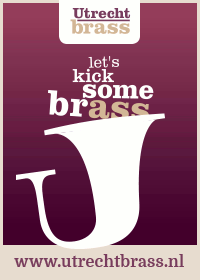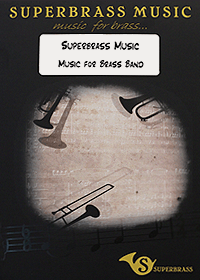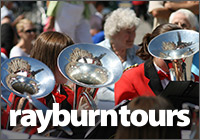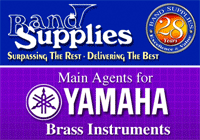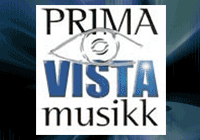Charley Brighton & Alex Seedhouse
16-Aug-2004Recital No 15
Charley Brighton & Alex Seedhouse (euphoniums)
Malcolm Stowell (piano & organ)
St Mary's Church, Slough
Saturday 7th August 2004
With blistering temperatures outside and only a handful of people in the church with fifteen minutes to go, it looked as if the potential audience may have succumbed to the lure of the English summer (catch it while you can!). That, however, would be to underestimate the regular audience who attend the weekly series of free lunchtime concerts in this beautiful parish church. Sure enough, as noon drew near a respectable crowd waited in anticipation to hear a programme consisting largely of premiere performances.
Charley, whose banding career has included spells with Hanwell, John Laing Hendon and Sun Life Stanshawe, is currently soloist with the Buckinghamshire Symphonic Winds and the BBC Elstree Wind Band. For his solo recitals he is always on the lookout for new material, and the pieces featured on this
occasion were truly international.
The opening item, Journey to the Centre, was from the pen of Yvonne Anthony, Scottish born but now living in Australia, with a background in the world of jazz as a pianist. Thus it was no surprise to find not only cadenzas in free time for the euphonium, but also an attractive and intricate piano solo feature. The journey depicted was that of a very laidback traveller on a voyage of discovery, in no hurry to reach his destination, and the less penetrating sound of the 1900 Courtois instrument chosen seemed particularly appropriate. (Charley has an ever-growing collection of instruments, and these are intended to be played, not just treated as museum pieces)
For the second piece, Ballade, by Texan Kenneth Friedrich, Charley took up his favoured modern-day instrument, a Willson 2900 from 1992. The melodic interest moved constantly between the euphonium and the piano, one stating the tune whilst the other reflected upon it, or provided gentle ornamentation. It was the controlled playing that really stood out in this performance, sometimes extremely quiet, particularly at the top of the range, with the sound never forced, making the audience concentrate and listen more intently.
Staying in the USA, Joe Miserendino wrote his Three Night Songs for cello and strings, but has adapted them for euphonium, this time with organ accompaniment. The movement selected for this recital was Song of a Nostalgic Night, and was played on Charley's latest acquisition, a Besson "Enharmonic" euphonium from 1918 - two sets of tuning slides, one for the middle and upper notes and a longer set for the lower notes. As for the music itself, melodically it was fairly straightforward and tonal, given the occasional chromatic inflection, but the underlying chords were at times most unexpected, to say the least! With sensitive choice of stops from Malcolm, it was a most successful pairing, with the euphonium never overpowered by its larger companion.
For the second item by Yvonne Anthony, Charley was joined by Alex Seedhouse, a member of Youth Brass 2000 and, with Charley, a regular contributor to theMouthPiece.com brass band discussion forum. Alex had just heard that he had passed his Grade 8 on euphonium, and was due to leave for an overseas trip with his band later in the week. A Few Licks for Felix consists of 5 variations for two euphoniums (no accompaniment) based on Felix Kept on Walking, the theme from the cartoon. The short variations encompass a number of styles, including waltz, swing and blues, and call on both players to use the full range of the instrument. Although Alex felt afterwards that he had not been at his best, the item was well received by the audience, and showed considerable potential, particularly once a fuller and warmer sound is developed.
The fifth premiere of the day found Charley taking up an 1891 Highams 5 valve euphonium to perform Elegy by Stuart Hyson. Having scoured various offerings on Sibelius seeking potential collaborators, it is somewhat ironic that Stuart hails from Feltham, only a few miles down the road. His Elegy was originally intended for flute but suited the euphonium perfectly, and the instrument itself was a joy to hear, with a light tone and sounding very easy-blowing right up to the top register.
For the final item, played this time on a Hawkes "Dictor" euphonium dating from 1920, Charley had raided the coffers of the French conservatoire. Cantabile & Scherzando was written by Henry Busser in the 1950's as a competition piece for trombone, but again it worked perfectly on euphonium, complete with an unusual 7 in the bar for the "Cantabile" section.
Thus ended a very enjoyable musical offering, after which refreshments were served at the back of the church, with an opportunity to mix informally with the performers. The combination of new and unusual repertoire coupled with the chance to see and hear some of the older instruments made for a very interesting time, and left the audience full of admiration as Charley coped manfully with the various fingering systems and tuning problems involved. Above all, however, it was the making of good music which counted, showing that new repertoire does not have to difficult for the listener, despite any technical problems it may pose for the players.
Peter Bale




